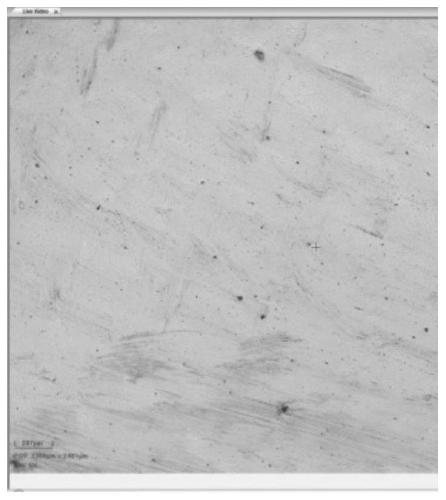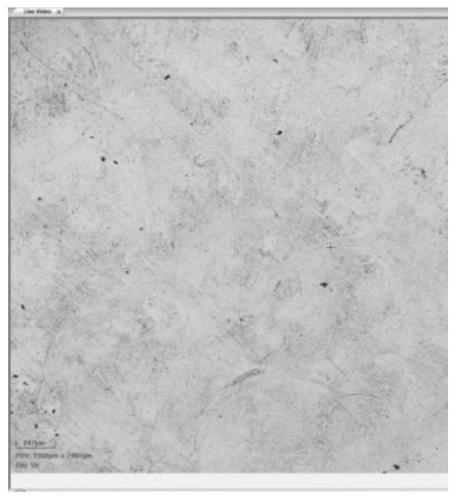Glass paste for thermal printing head and preparation method of glass paste
A thermal printing head and glass paste technology, which is applied in the field of thermal printing head materials, can solve the problems that restrict the development of printers, and achieve the effects of expanding the firing temperature range, improving the sintering density, and increasing the melting temperature
- Summary
- Abstract
- Description
- Claims
- Application Information
AI Technical Summary
Problems solved by technology
Method used
Image
Examples
Embodiment 1-2
[0040] A method for preparing glass paste for thermal printing head, comprising the steps of:
[0041] Preparation of lead-free glass powder: weighing, mixing, smelting and ball milling according to the different ratios of the oxides listed in Table 1, and then after grinding to d(50)=4.0-5.0 μm, drying and crushing through an 80-mesh sieve, Then use dry, clean compressed air to pass the atomized glass powder through the heat treatment furnace from bottom to top in a vertical furnace to obtain lead-free glass powder; the roasting treatment process is carried out as listed in Table 1;
[0042] Preparation of organic carrier: Weigh 500g according to the ratio of 85% terpineol, 10% Ashland N7 cellulose and 5% oleic acid, dissolve completely at a temperature of 60-90°C, and then filter through a 325-mesh sieve After cooling to room temperature, the organic carrier was obtained for use;
[0043] Preparation of glass paste for thermal print head: according to the ratio listed in Ta...
Embodiment 3
[0056] A method for preparing glass paste for thermal printing head, comprising the steps of:
[0057] Preparation of lead-free glass powder: by weight percentage: BaO 35%, CaO 10%, SiO 2 40%, Al 2 o 3 5%, SrO 5%, ZrO 2 5% weighing, mixing, smelting, ball milling, and then after grinding to d(50) = 4.0μm, drying and crushing through 80 mesh sieve, and then using dry and clean compressed air in a vertical furnace to atomize The glass powder is heat-treated through a heat treatment furnace from bottom to top to obtain lead-free glass powder; wherein, the melting temperature is 1400°C, the time is 0.1h, and the heat treatment temperature is 760°C, and the time is 2min;
[0058] Preparation of organic carrier: Weigh 500g according to the ratio of 90% terpineol, 5% Ashland N10 ethylcellulose and 5% oleic acid, dissolve completely at 60°C, and then filter through a 300-mesh sieve After cooling to room temperature, the organic carrier was obtained for use;
[0059] Preparation...
Embodiment 4
[0061] A preparation method of glass paste for thermal printing head, comprising the steps of:
[0062] Preparation of lead-free glass powder: by weight percentage: BaO 15%, CaO 10%, SiO 2 35%, Al 2 o 3 15%, SrO 20%, ZrO 2 5% weighing, mixing, smelting, ball milling, and then after grinding to d(50) = 5.0μm, drying and crushing through an 80 mesh sieve, and then using dry and clean compressed air in a vertical furnace to atomize The glass powder is heat-treated through a heat treatment furnace from bottom to top to obtain lead-free glass powder; wherein, the melting temperature is 1500°C for 1 hour, and the heat treatment temperature is 780°C for 3 minutes;
[0063] Preparation of organic carrier: weigh 500g according to the ratio of 65% terpineol, 15% Ashland N10 ethylcellulose and 20% oleic acid, dissolve completely at 90°C, and then filter through a 400-mesh sieve After cooling to room temperature, the organic carrier was obtained for use;
[0064] Preparation of gla...
PUM
| Property | Measurement | Unit |
|---|---|---|
| particle size | aaaaa | aaaaa |
Abstract
Description
Claims
Application Information
 Login to View More
Login to View More - R&D
- Intellectual Property
- Life Sciences
- Materials
- Tech Scout
- Unparalleled Data Quality
- Higher Quality Content
- 60% Fewer Hallucinations
Browse by: Latest US Patents, China's latest patents, Technical Efficacy Thesaurus, Application Domain, Technology Topic, Popular Technical Reports.
© 2025 PatSnap. All rights reserved.Legal|Privacy policy|Modern Slavery Act Transparency Statement|Sitemap|About US| Contact US: help@patsnap.com



